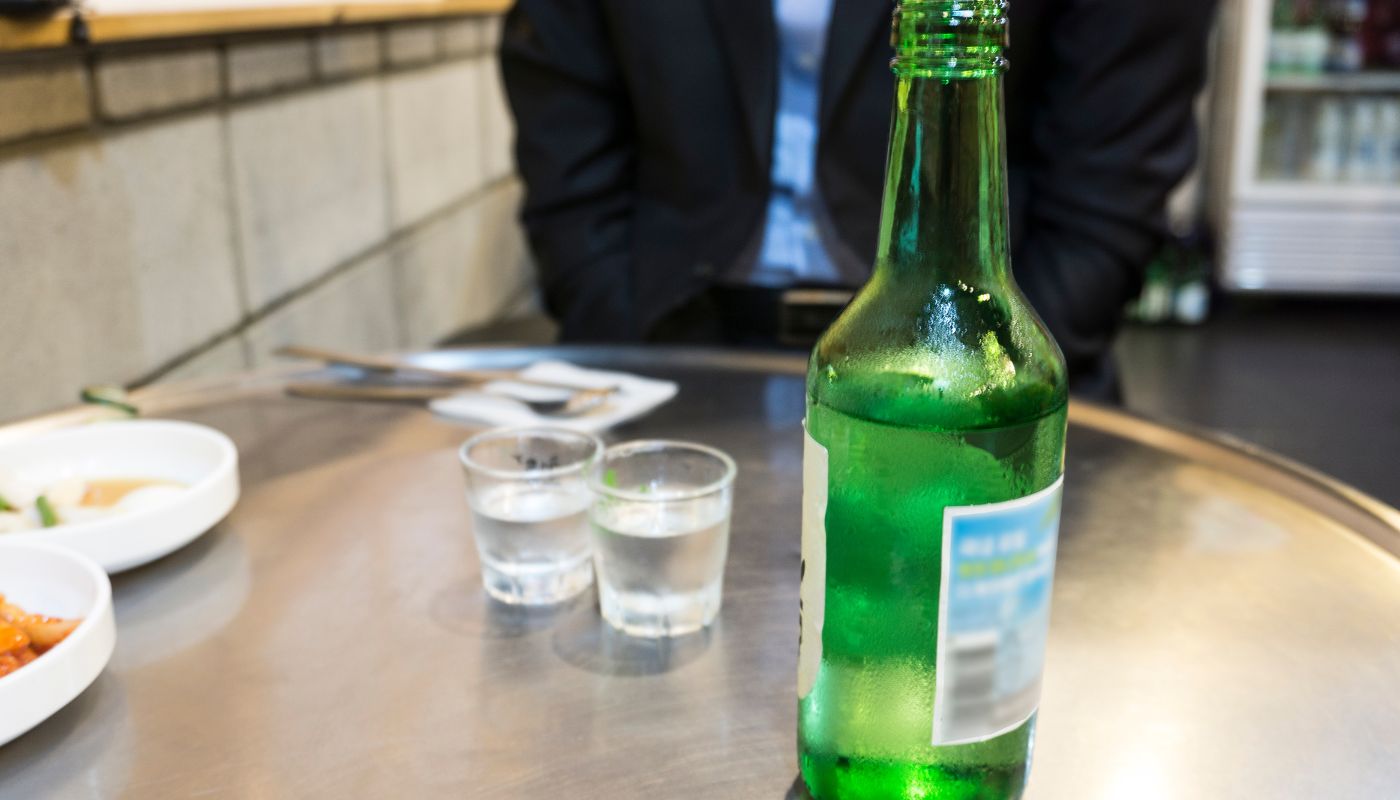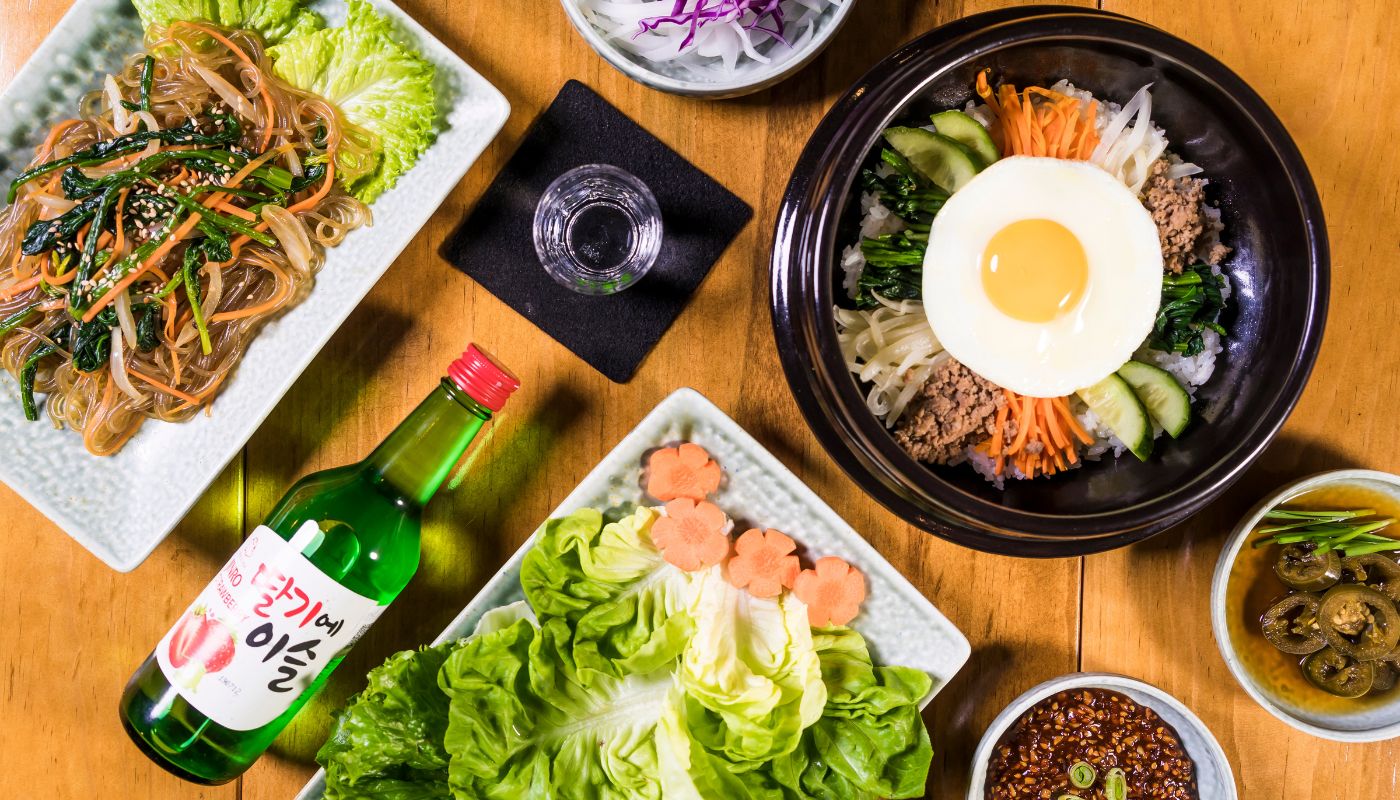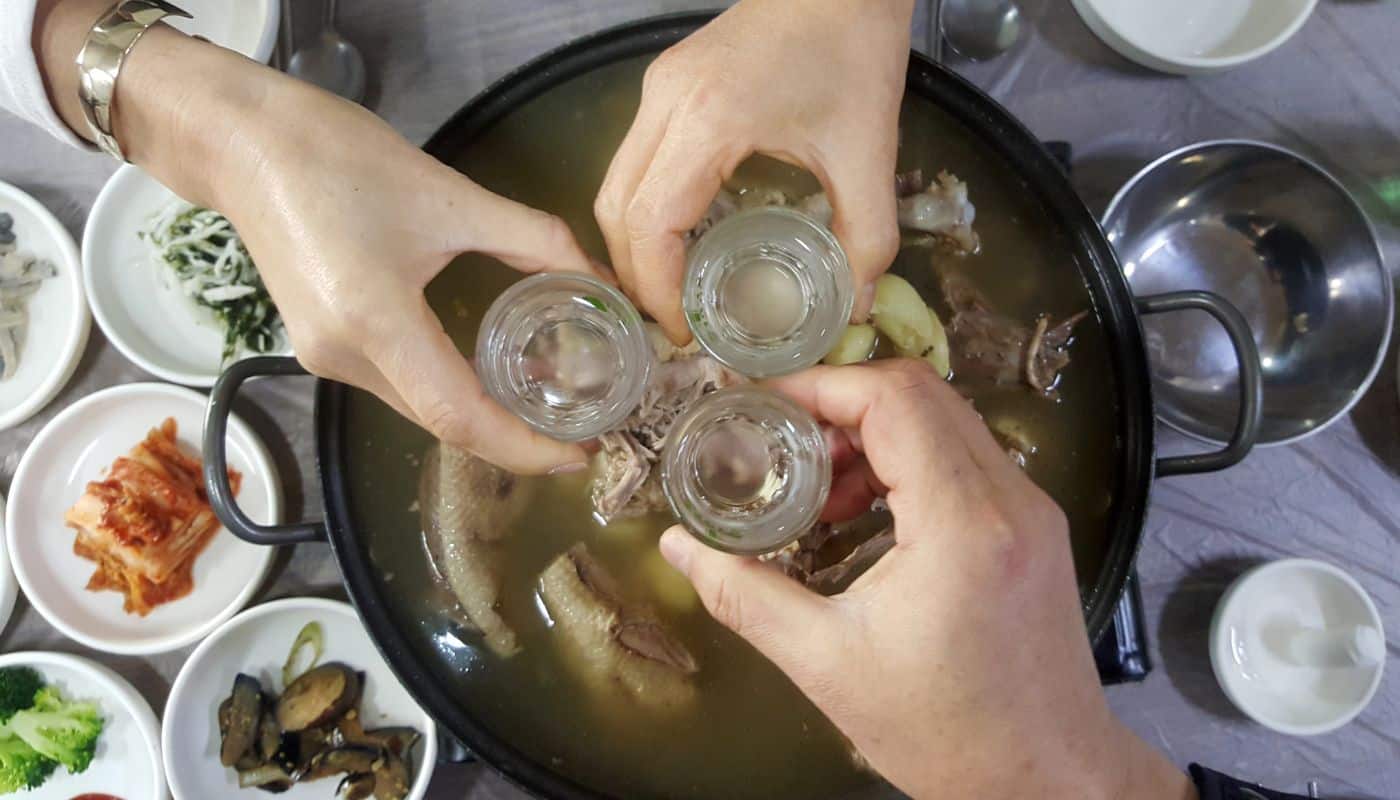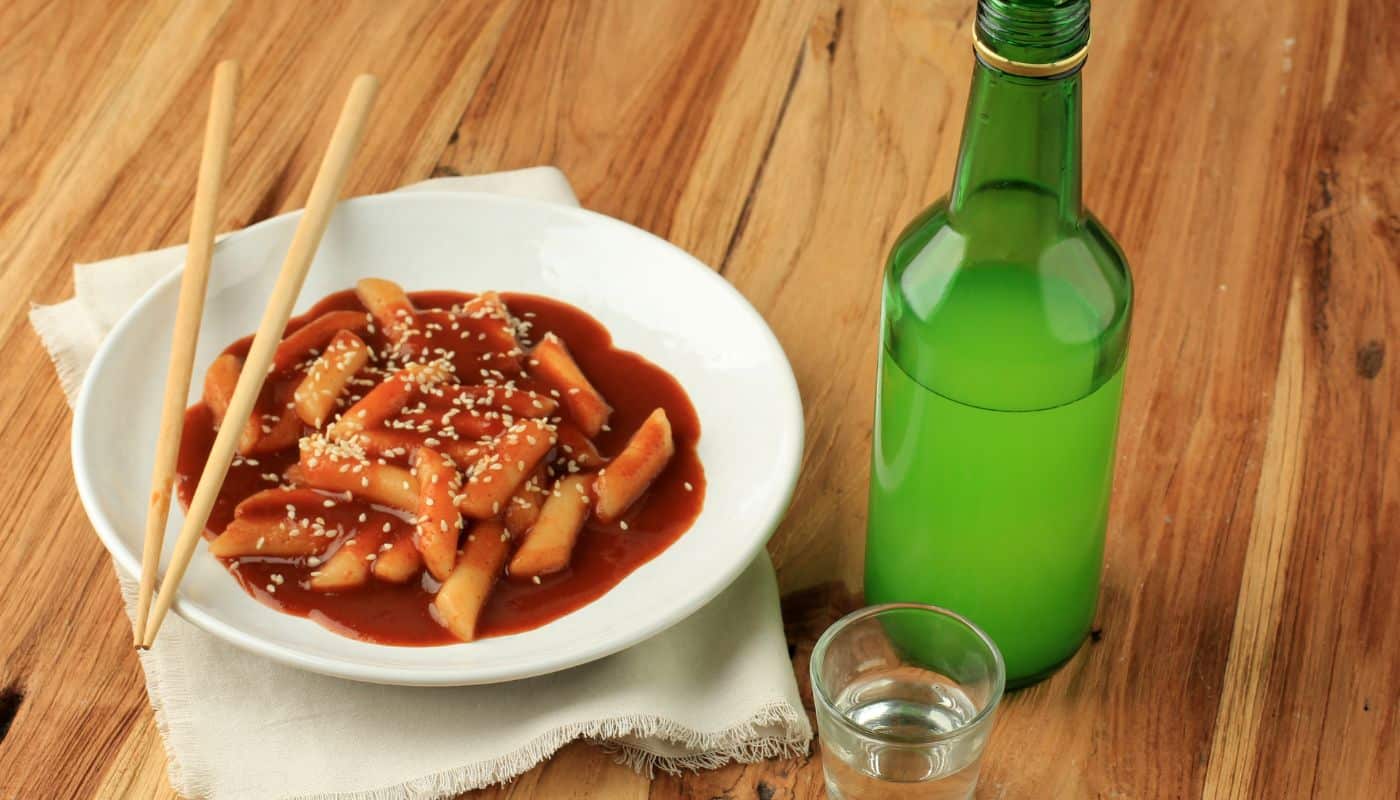From Korea to the World: The Fascinating History of Soju
Get ready to journey through time as we uncover the rich and captivating history of Soju from Korea, it’s most beloved spirit. For centuries, this traditional Korean alcohol has withstood the test of time, evolving into a global phenomenon enjoyed by millions around the world. From its humble beginnings in the ancient Korean kingdom of Goguryeo to its widespread popularity today, Soju has become a cultural icon and a symbol of Korean heritage.
What exactly is Soju
But what exactly is Soju? Made from fermented rice, barley, or sweet potatoes, this clear distilled liquor has a smooth and clean taste that is both refreshing and versatile. Whether sipped neat or used as a base for delicious cocktails, Soju never fails to impress.

Soju is made by distillation, using alcohol made from sweet potato
Join us on this captivating journey as we delve deep into the origins of Soju, its historical significance, and the fascinating stories behind its production methods. From traditional distillation techniques passed down through generations to modern innovations, Soju’s story showcases the dynamic and ever-changing nature of Korean culture.
So sit back, grab a glass of this iconic spirit, and let’s embark on this colorful voyage through time as we discover the captivating history of Soju.
Origins of Soju
The origins of Soju can be traced back to the ancient Korean kingdom of Goguryeo, which existed from 37 BCE to 668 CE. It is believed that Soju was first created during this time, making it one of the oldest spirits in the world. The early versions of Soju were made from fermented grains such as rice and barley, and were consumed mainly for medicinal purposes.
One of the key figures in the history of Soju is Yi Bangwon, the third king of the Joseon Dynasty. It was during his reign in the 15th century that Soju started to gain popularity as a recreational beverage. Yi Bangwon was known for his love of alcohol, and he played a significant role in promoting Soju as the drink of choice among the aristocracy.
Over the years, Soju continued to evolve and adapt to the changing tastes and preferences of the Korean people. Different regions developed their own unique variations of Soju, each with its own distinct flavor profile and production methods. Today, Soju is produced using a combination of traditional and modern techniques, resulting in a spirit that embodies the essence of Korean culture.
Soju throughout Korean history
Throughout Korean history, Soju has played a prominent role in various social, cultural, and religious settings. It was often consumed during important ceremonies and celebrations, such as weddings, ancestral rites, and harvest festivals. Soju was also used as a form of currency, with bottles of Soju being exchanged as gifts between families and friends.

Soju is deeply embedded in Korean culture and social traditions
During the Japanese occupation of Korea in the early 20th century, Soju production was heavily regulated by the colonial government. This led to a decline in the quality and availability of Soju, as well as the rise of counterfeit and adulterated versions of the spirit. However, Soju remained a symbol of Korean resilience and identity, as the people continued to find ways to produce and enjoy their beloved drink.
After Korea gained independence in 1945, the production and consumption of Soju experienced a resurgence. The Korean government recognized the cultural and economic significance of Soju and took measures to promote its production and export. Today, Soju is not only a popular beverage in Korea but also a symbol of national pride and a major contributor to the country’s economy.
Soju production process
The production process of Soju is a meticulous and time-consuming craft that requires both skill and patience. Traditionally, Soju was made by fermenting grains such as rice or barley, and then distilling the resulting liquid. This process involved multiple stages, including mashing, fermentation, and distillation, each of which required careful attention to detail.
In recent years, there have been advancements in Soju production techniques, with the introduction of modern equipment and technology. This has allowed for greater efficiency and consistency in the production process, while still maintaining the traditional flavors and characteristics of Soju. Today, some Soju producers use automated systems to control the temperature, pressure, and fermentation time, ensuring a high-quality product every time.
Soju’s popularity in Korea
Soju holds a special place in the hearts of the Korean people, who have embraced it as their national drink. It is estimated that the average Korean consumes over 10 liters of Soju per year, making it one of the most consumed spirits in the world. Soju is deeply ingrained in Korean culture and is often enjoyed during social gatherings, meals, and nights out with friends.

Soju is almost always present during traditional holidays, social gatherings, meals, and nights out with friends
One of the reasons for Soju’s popularity in Korea is its affordability. Unlike other spirits that can be quite expensive, Soju is relatively inexpensive and widely available. This makes it accessible to people from all walks of life, regardless of their social or economic status. Additionally, Soju’s clean and mild flavor profile makes it a versatile spirit that can be enjoyed on its own or mixed with other ingredients to create a variety of cocktails.
Soju’s international expansion
In recent years, Soju has gained popularity outside of Korea, particularly in other Asian countries such as Japan, China, and Vietnam. Its smooth and easy-drinking nature, coupled with its affordability, has made it a favorite among international travelers and expatriates. Soju bars and restaurants have sprung up in cities around the world, offering a taste of Korean culture and tradition to a global audience.
The international success of Soju can also be attributed to the Korean Wave, also known as Hallyu, which refers to the global popularity of Korean entertainment and culture. Korean dramas, movies, and music have gained a massive following worldwide, introducing Soju to new audiences who are eager to experience the taste of Korea. This cultural exchange has helped to further solidify Soju’s position as a global phenomenon.
Different types of Soju
While Soju is primarily made from rice, some variations use other grains such as barley, wheat, or sweet potatoes. Each type of Soju has its unique flavor profile and characteristics, offering a diverse range of options for consumers to choose from.

Traditonal Tteokbokki and Baekseju
Rice Soju, also known as “Baekseju,” is the most traditional and widely consumed type of Soju. It has a clean and delicate flavor, with subtle notes of rice and a smooth finish. Barley Soju, on the other hand, has a slightly nutty and earthy taste, with a hint of sweetness. Sweet Potato Soju is known for its distinct caramel-like flavor and rich mouthfeel, making it a popular choice among those who prefer a bolder and more robust spirit.
Soju in pop culture
Soju has become a prominent feature in Korean pop culture, often making appearances in movies, TV shows, and music videos. It is often depicted as a symbol of celebration, friendship, and camaraderie, reflecting its role in Korean society. Soju has also been referenced in numerous songs and lyrics, further cementing its status as a cultural icon.
In recent years, Soju has gained recognition on the international stage, with celebrities and influencers from around the world expressing their love for the spirit. It has become a trendy and fashionable drink, with Soju-inspired cocktails and merchandise becoming popular among the younger generation. Soju’s presence in pop culture has helped to raise its profile and introduce it to a wider audience.
Soju cocktail recipes
Soju’s versatility extends beyond being enjoyed neat, as it can also be used as a base for a variety of cocktails. From classic favorites to innovative creations, there are countless ways to incorporate Soju into your next cocktail party. Here are a few popular Soju cocktail recipes to get you started:
1. Soju Mojito: In a glass, muddle fresh mint leaves and lime wedges. Add ice, 2 ounces of Soju, and a splash of soda water. Stir gently and garnish with a mint sprig.
2. Watermelon Soju: Blend fresh watermelon chunks until smooth. In a glass, combine 2 ounces of Soju and the watermelon juice. Add ice and stir well. Garnish with a watermelon slice.
3. Soju Sunrise: Fill a glass with ice. Pour 2 ounces of Soju, followed by orange juice, leaving a small gap at the top. Slowly pour grenadine syrup over the back of a spoon into the glass, allowing it to sink to the bottom. Do not stir. Garnish with an orange slice.
These are just a few examples of the countless possibilities when it comes to Soju cocktails. Feel free to experiment and create your own unique concoctions, using fresh fruits, herbs, and mixers to enhance the flavors of Soju.
Soju has just started in the west
As we reach the end of this captivating journey through the history of Soju, it is clear that this iconic spirit has a story worth telling. From its humble origins in ancient Korea to its global popularity today, Soju has become more than just a drink – it is a symbol of Korean culture and heritage.
Whether you’re sipping Soju at a traditional Korean meal, enjoying it with friends at a lively gathering, or trying out new cocktail recipes, Soju has a way of bringing people together and creating memorable experiences. So next time you raise a glass of Soju, take a moment to appreciate the centuries of tradition and craftsmanship that have gone into creating this beloved spirit.
So sit back, relax, and enjoy the smooth and refreshing taste of Soju, as you become a part of its fascinating history. Cheers!
Exploring South Korea Like a Local
Try silly good Korean grill food!
What to see and do in South Korea




